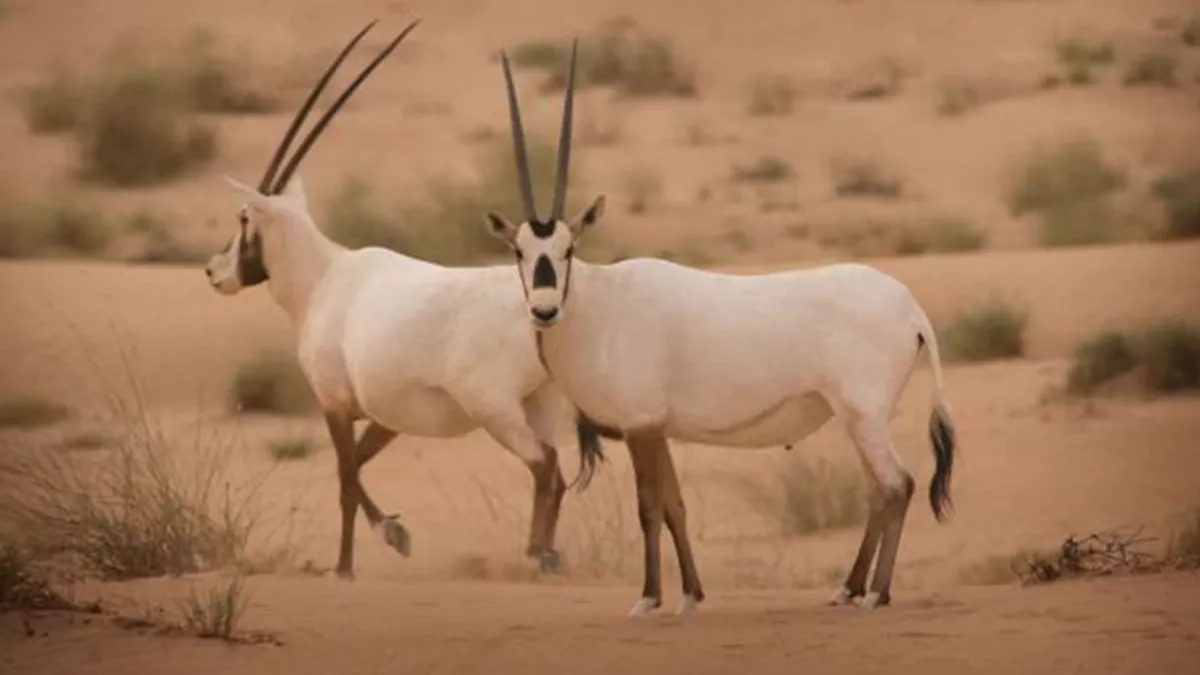MoCCAE announced that nine internationally significant key biodiversity areas has been identified
07 Jun 2024
News
The Ministry of Climate Change and Environment (MoCCAE) declared on Thursday that the United Arab Emirates has identified nine internationally significant key biodiversity areas (KBA) that are home to various endangered flora and animals.
Wadi Al-Helo in Sharjah; Khor Fakan and Shark Island in Sharjah; Wadi Al-Bih in Ras Al Khaimah; Siniyah Island and Khor Al Beidah in Umm Al Quwain are among the nine newly appointed KBAs. The Arabian Oryx Protected Area is located in Abu Dhabi, as is the Marawah Marine Area and Al Yasat Marine Area in Abu Dhabi.
MoCCAE asserts that these regions are essential to preserving the stability and preventing the loss of biodiversity.
Two KBAs have been identified for the Arabian Oryx, Arabian Sand Gazelle, and Arabian Gazelle; two more were identified as the first KBAs for the Middle Eastern dugong, also known as the "sea cow."
Once on the verge of extinction in the 1970s, the United Arab Emirates now hosts the greatest population of Arabian Oryx worldwide. They may be found in the Arabian Oryx Protected Area in Abu Dhabi as well as the Al Marmoom Desert Conservation Reserve in Dubai.
The Al Yasat Marine and Marawah Marine Zones in the United Arab Emirates are home to the second-largest concentration of sea cows globally.
The nine KBAs were designated last year. Official listings for these locations may be found in the World Database of Key Biodiversity Areas.
Al Yasat Marine Area - Abu Dhabi
A breeding population of 223–347 dugong pairs inhabits this KBA. Moreover, Socotra Cormorants are also present here.
Arabian Oryx Conservation Area in Umm Al Zumul - Abu Dhabi
About 835 Arabian Oryx are present here. The Arabian Oryx Conservation Area is home to the largest natural population of oryx.
Marawah Marine Area - Abu Dhabi
A breeding population of about 10,000 pairs of globally threatened Socotra Cormorant Phalacrocorax nigrogularis are present here.
Siniyah and Khor Al Beidah Island - Umm al Quwain
This place has been preserved because of Socotra Cormorant. On this site, the number of breeding birds recorded is between 26,000 and 41,000 birds (16,750 pairs).
Dubai Desert Conservation Reserve
The Arabian sand gazelle and the Arabian mountain gazelle are two significant species that make this place unique.
Wadi Al-Helo – Sharjah
The presence of Margarita’s Leaf-toed Gecko (Asaccus margaritae), a newly discovered species was documented for the first time in 2016, and is only found in the UAE and Oman.
Al Marmoom Conservation Reserve - Dubai
Three significant species may be found here, which is why this location was chosen as a KBA: Arabian sand gazelle (Gazella marica), Arabian mountain gazelle (Gazella Arabica), and Arabian oryx (Orys leucoryx).
Khor Fakkan and Shark Island – Sharjah
This place is protected because of the Emirati Leaf-toed Gecko (Asaccus caudivolvulus), a severely endangered indigenous species in the United Arab Emirates.
Wadi Al Baih - Ras Al Khaimah
Ruus al Jibal Fan-footed gecko (Ptyodactylus ruusaljibalicus) is found here. The estimated population of 360 present in Hajar Mountains.
